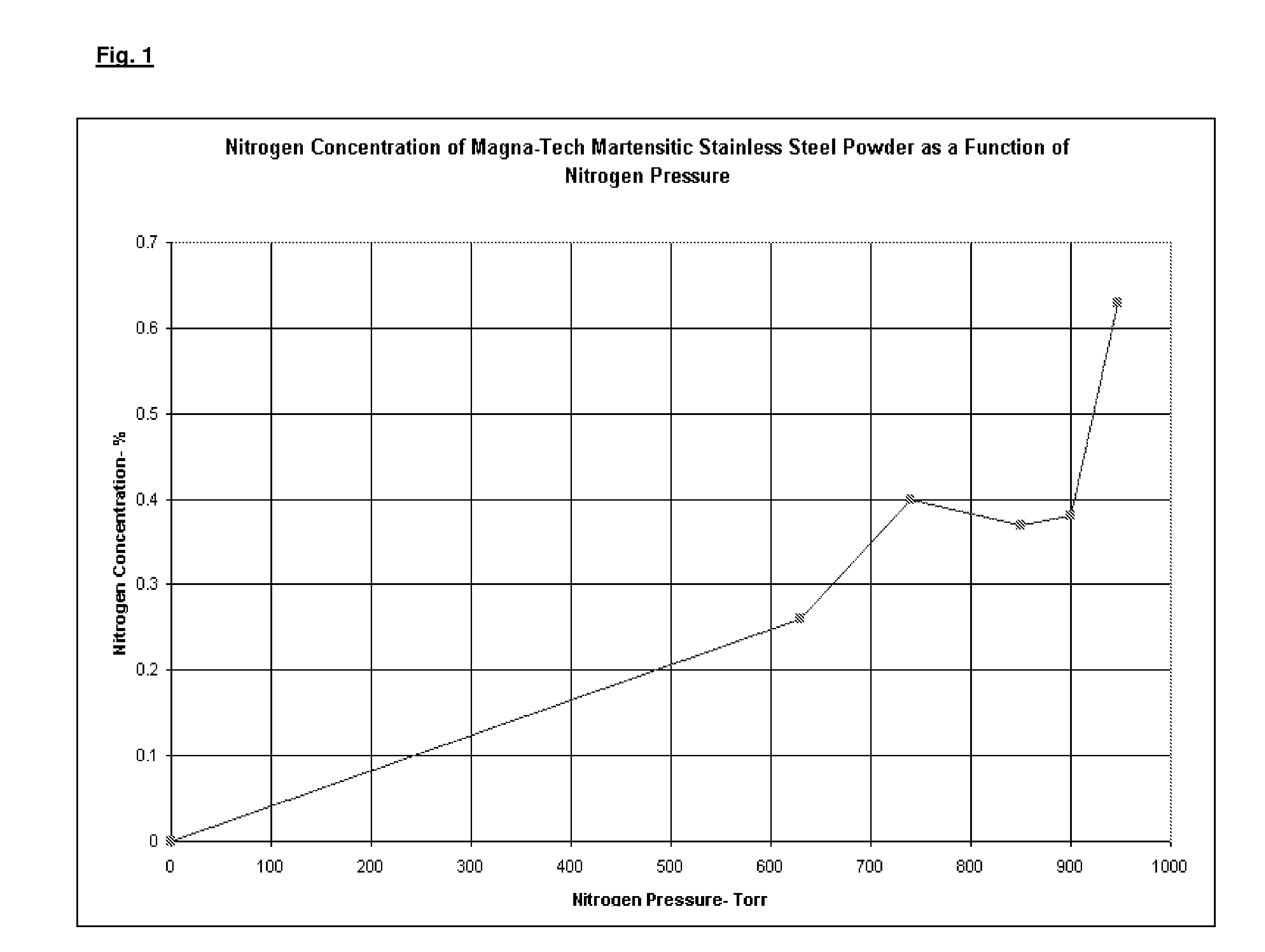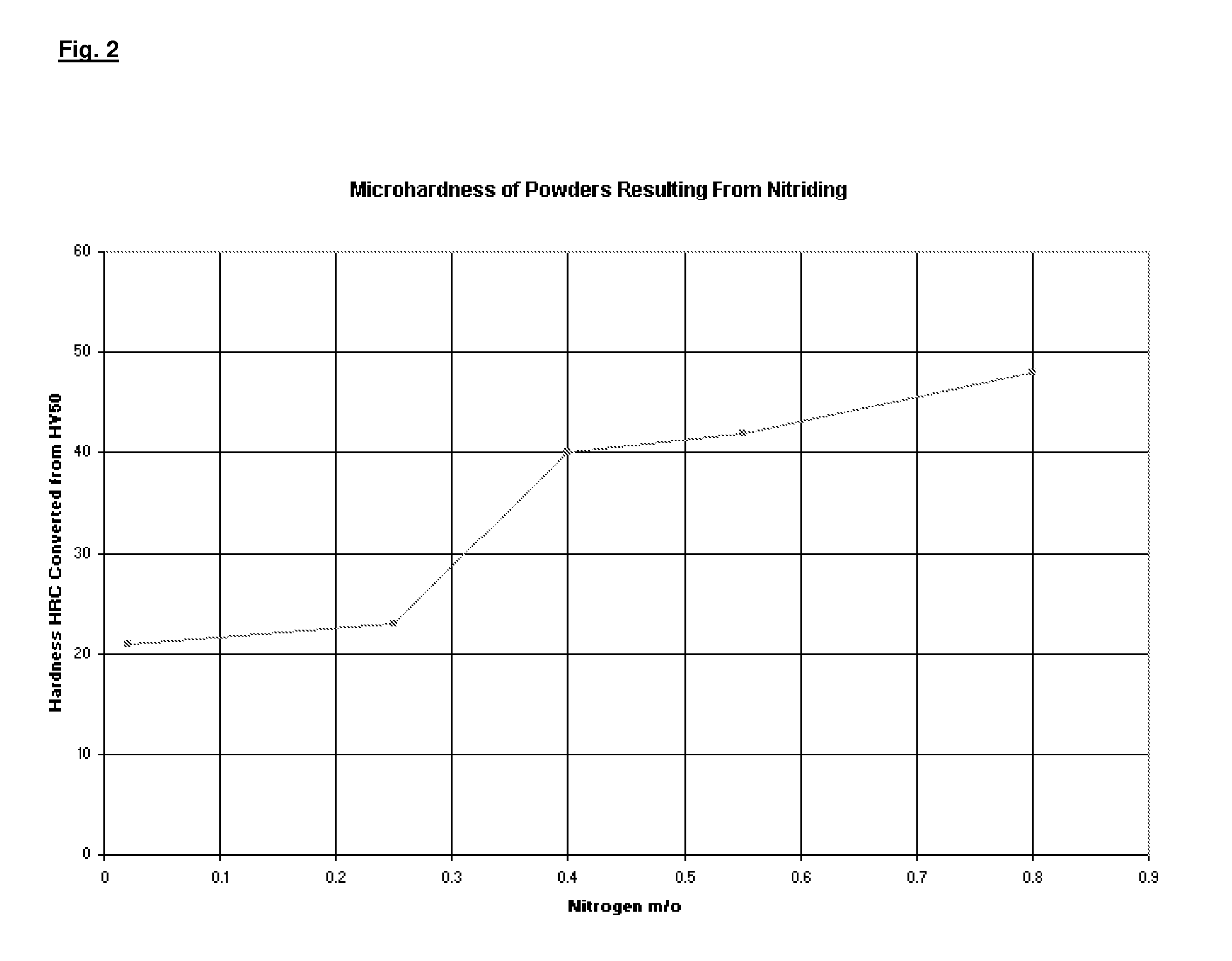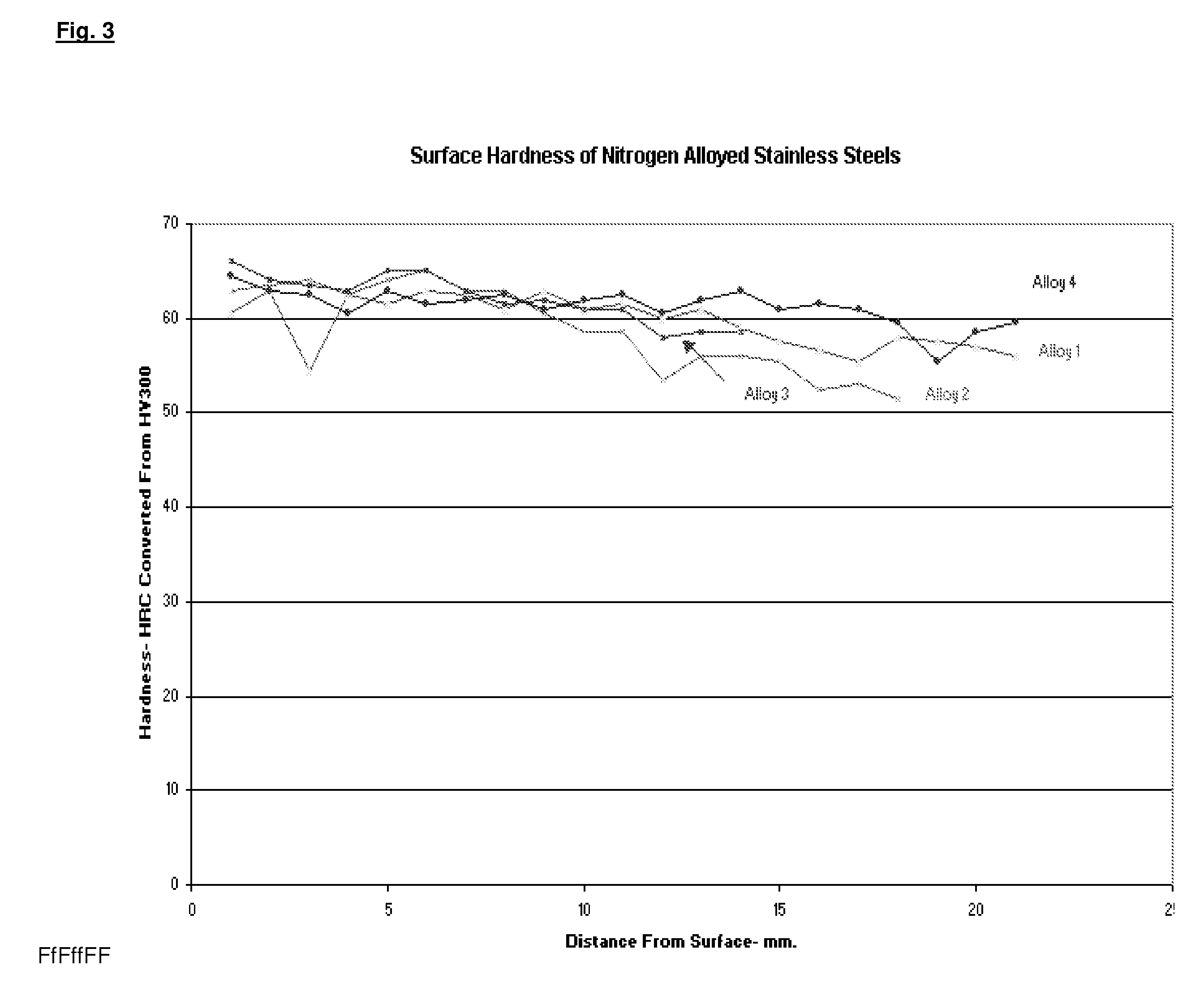Nitrogen alloyed stainless steel and process
a technology of stainless steel and nitrogen alloy, applied in the field of industrial coating, can solve the problems of reducing the boundary lubrication performance of oil formulations, insufficient corrosion resistance, and reducing wear resistance, so as to improve the kinetics of the diffusion process, improve the high temperature resistance to scuffing and adhesive wear and corrosion resistance, and improve the effect of scuffing resistance and adhesive wear resistan
- Summary
- Abstract
- Description
- Claims
- Application Information
AI Technical Summary
Benefits of technology
Problems solved by technology
Method used
Image
Examples
example i
[0053]Three alloy compositions were desired: one containing 0.25 m / o nitrogen, one containing 0.4 m / o nitrogen, and a third containing 5.5 m / o nitrogen. Several runs were made to produce five-pound samples to determine whether the process was successful in providing the proper concentration of nitrogen after nitrogen alloying the powder. Nitrogen content was varied by establishing the nitrogen partial pressure required to yield the desired nitrogen concentration within the powder particles. A one-inch bed of powder was loaded within trays and placed in the vacuum furnace. The furnace was evacuated and the temperature was slowly increased to 1950° F. (1065° C.) in a partial pressure of nitrogen, varied to provide the desired nitrogen concentration within the powder. In each case, the temperature to nitride the water atomized base powder was maintained constant at 1950° F. (1065° C.) and the time to nitride the powder was a constant four hours. Pure nitrogen was used to saturate the p...
example 2
[0057]Bushings of 422 stainless steel composition were placed in a partial pressure vacuum furnace and evacuated to −100μ pressure. Hydrogen gas was introduced and the temperature was elevated to 1000° F. (540° C.) to activate the surface. The atmosphere was shifted to a partial pressure of nitrogen gas and the temperature was elevated to 2000° F. (1095° C.). The nitrogen gas flow was increased to 630 torr and the bushings were nitrided under these conditions for a total of 10 hours. The bushings were quenched in nitrogen at 10 barr pressure to ambient in approximately 53 seconds. The quenched bushings were stabilized in liquid nitrogen at −300° F. for 30 minutes and tempered in air for 2 hours.
[0058]One machined bushing nitrided under the above conditions was sacrificed to permit micro-hardness readings at the surface for a depth of 1 mm. at 0.1 mm intervals. Subsequent hardness measurements were continued to measure the hardness over the total cross section. To accomplish this, th...
example 3
[0063]Spray paint pumps distribute sprayed paint under an atomizing pressure of 3,000 psi. One of the main constituents of the pump is the piston rod. In practice, the piston rod is protected from erosion by seals that prevent hard abrasive particles comprising the pigments from abrading the piston rod. However, when sustaining service, the seals begin to leak and thereby permit pigment to abrade the piston rod. Therefore the piston rod requires some degree of surface protection against abrasion, while not compromising the corrosion resistance of the piston rod. There are various types of alloys that can provide the abrasion resistance for protection of the surface of the piston rod. The two alloys selected for this study were a precipitation hardening stainless steel and a 440 A stainless steel. The precipitation hardening stainless steel of choice is of 17-5 PH chemical composition. This material has the properties of good strength, ductility and toughness required of piston rods....
PUM
| Property | Measurement | Unit |
|---|---|---|
| partial pressure | aaaaa | aaaaa |
| pressure | aaaaa | aaaaa |
| pressure | aaaaa | aaaaa |
Abstract
Description
Claims
Application Information
 Login to View More
Login to View More - R&D
- Intellectual Property
- Life Sciences
- Materials
- Tech Scout
- Unparalleled Data Quality
- Higher Quality Content
- 60% Fewer Hallucinations
Browse by: Latest US Patents, China's latest patents, Technical Efficacy Thesaurus, Application Domain, Technology Topic, Popular Technical Reports.
© 2025 PatSnap. All rights reserved.Legal|Privacy policy|Modern Slavery Act Transparency Statement|Sitemap|About US| Contact US: help@patsnap.com



